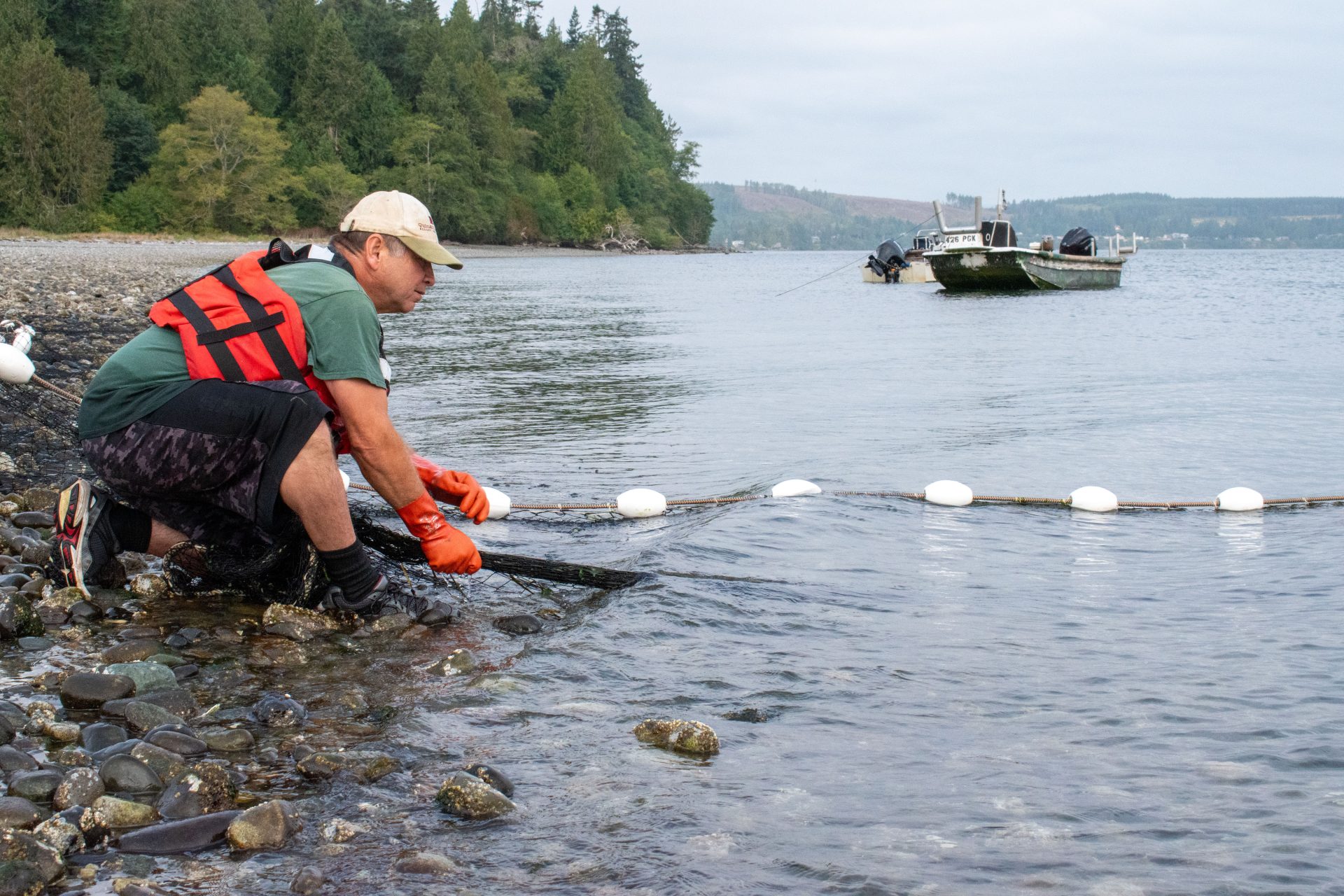After keeping its old hatchery patched together for the past decade, the Lower Elwha Klallam Tribe was ecstatic to transfer fish to its new state-of-the-art hatchery recently.
Nearly 160,000 Elwha River steelhead juveniles were successfully transferred with the help of Washington Department of Fish and Wildlife fish transfer trucks.
“We have better rearing conditions for fish at the new facility, including having greater control over water temperatures while salmon eggs are incubated. Plus, there are more raceways and rearing ponds,” said Larry Ward, the tribe’s hatchery manager.
The new hatchery is closer to the Elwha River and it will have access to three times more water than at the old location. While both facilities can handle the same amount of fish, Ward said, the new hatchery allows for healthier rearing conditions.

The existing program already includes chum, coho and steelhead; Ward expects to start a pink broodstock program within the next few years. The old hatchery will be decommissioned over time, as older fish return to that facility and the tribe transitions to full use of the new facility.
Steelhead from the hatchery are part of the tribe’s broodstock program to help ensure that Elwha River steelhead aren’t wiped out during deconstruction of the Elwha River dams, which starts this September. Elwha River steelhead are part of the Puget Sound steelhead population listed as “threatened” under the federal Endangered Species Act.
The river’s two dams, the 108-foot-tall Elwha Dam and the 210-foot-tall Glines Canyon Dam, were built without fish ladders and have been in place since the early 1900s. Currently only the lower 5 miles of the river is available to salmon.
Since the early 1990s, the tribe has been preparing the river valley and floodplains for expected increased water flow and sediment following dam removal. Efforts have included constructing engineered logjams, removing dikes, replacing undersized culverts and bridges, and planting native vegetation in floodplain areas.




